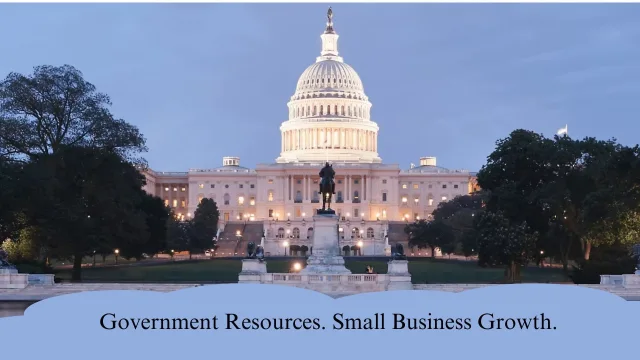trending
neon
Cirque du Soleil offers summer ticket deals
dining out
Celebs ditch the Strip for iconic Henderson restaurant
july 
trending
neon
Cirque du Soleil offers summer ticket deals
dining out
Celebs ditch the Strip for iconic Henderson restaurant
july 

As inflation remains a key challenge in 2025, U.S. businesses are adapting their strategies to manage rising costs. From increasing operational efficiency to adjusting pricing models, companies are taking proactive steps to remain competitive while protecting their margins




The impact of inflation continues to reverberate across the U.S. economy, and businesses, both large and small, are feeling the squeeze. In 2025, inflation rates remain elevated, pushing up the costs of raw materials, labor, and logistics. In response, businesses are employing a variety of strategies to cope with these pressures, aiming to maintain profitability without alienating consumers or sacrificing product quality.
Several factors are driving inflation and cost pressures for businesses:
✅ Rising Raw Material Costs: As supply chain disruptions and geopolitical tensions continue, the cost of raw materials like oil, metals, and agricultural products remains high.
✅ Labor Shortages and Wage Increases: The tight labor market is driving up wages, adding to the overall cost structure of many businesses. Companies are facing higher compensation demands to retain talent.
✅ Logistics and Transportation Costs: Increased demand and higher fuel prices have led to spikes in transportation costs, making distribution more expensive for companies that rely on shipping and delivery.
✅ Regulatory Changes: New regulations, including environmental standards and tax policies, are adding complexity and costs to business operations.
To mitigate the effects of inflation and rising costs, U.S. businesses are implementing various strategies that focus on operational efficiency, customer retention, and pricing adjustments.
1. Increasing Operational Efficiency
One of the primary ways businesses are managing rising costs is by improving their operational efficiency:
Automation and Technology: Businesses are increasingly turning to automation and technology to streamline processes and reduce reliance on manual labor. From manufacturing lines to customer service, automation helps reduce costs in the long term while improving productivity.
Lean Management Practices: Many businesses are adopting lean management practices to eliminate waste, optimize processes, and reduce overhead. This includes identifying inefficiencies and implementing continuous improvement strategies.
Outsourcing and Offshoring: In some cases, U.S. companies are outsourcing or offshoring certain functions to countries with lower labor costs. This approach allows businesses to cut expenses while maintaining competitiveness.
2. Adjusting Pricing Models
With rising costs across the board, many businesses are adjusting their pricing strategies to reflect inflationary pressures:
Price Increases: While not all businesses are eager to raise prices, some have had to do so to protect margins. However, price hikes are often implemented gradually to avoid alienating customers. In certain sectors, businesses are passing on the higher costs directly to consumers.
Value-Based Pricing: Instead of simply increasing prices across the board, many businesses are shifting to value-based pricing models. This approach focuses on emphasizing the value provided to customers, allowing businesses to charge premium prices for high-quality or unique products.
Subscription Models: Subscription-based services are increasingly being adopted, especially in industries like media, technology, and food delivery. By shifting to a subscription model, companies can lock in steady revenue streams and better predict their cash flow.
3. Strengthening Customer Relationships
Maintaining strong relationships with customers is critical during times of economic uncertainty. Companies are focusing on loyalty and retention to mitigate the impact of inflation:
Customer Loyalty Programs: Many businesses are expanding their customer loyalty programs to encourage repeat purchases and enhance customer retention. Offering discounts, rewards, or exclusive offers can help businesses build customer loyalty in the face of higher prices.
Personalized Services and Experiences: Businesses are increasingly using data analytics to offer more personalized products and services to their customers. Personalization helps improve customer satisfaction and allows businesses to differentiate themselves from competitors.
Customer Communication: Open and transparent communication with customers is more important than ever. Companies are educating consumers about the reasons for price increases or changes in service to maintain trust and understanding.
4. Reducing Non-Essential Costs
To protect profitability, many businesses are trimming non-essential expenses and focusing on their core operations:
Cutting Back on Non-Essential Expenditures: Companies are reviewing their budgets and cutting back on non-essential expenditures, such as luxury office perks, business travel, or discretionary marketing spending. This helps to free up capital for other areas of the business.
Outsourcing Non-Core Functions: Some businesses are outsourcing non-core functions like IT support, HR, and customer service to specialized firms that can perform these tasks more efficiently, reducing overhead costs.
Energy Efficiency: With rising energy costs, businesses are looking to improve their energy efficiency. Implementing energy-saving technologies, reducing waste, and shifting to renewable energy sources are helping companies lower operational costs.
5. Innovation and Product Diversification
Innovation is a key way businesses are positioning themselves for the future. By diversifying their product lines or introducing new services, companies are able to tap into new revenue streams:
New Product Lines: Many companies are introducing new products or services to meet changing customer demands. In sectors like consumer electronics, fashion, and food, innovation allows businesses to stay relevant in a competitive market.
Sustainability Initiatives: Consumers are becoming more eco-conscious, and many businesses are capitalizing on this by introducing sustainable and eco-friendly products. Sustainability not only helps address customer concerns but can also lead to cost savings through efficiency and reduced waste.
As inflation is expected to remain a challenge in the near term, businesses will need to continue adapting to these pressures. The key to long-term survival will be innovation, efficiency, and a strong relationship with customers. While economic uncertainty may persist, companies that are able to remain flexible and responsive will be best positioned to thrive.
As inflation remains a key challenge in 2025, U.S. businesses are adapting their strategies to manage rising costs. From increasing operational efficiency to adjusting pricing models, companies are taking proactive steps to remain competitive while protecting their margins
the latest

Mergers and Acquisitions Surge in U.S. Despite Economic Uncertainty
Despite economic challenges, mergers and acquisitions (M&As) in the U.S. business sector have surged. Companies are leveraging strategic deals to enhance market presence, expand operations, and drive growth in a volatile economic landscape

U.S. Companies Respond to Labor Shortages with Automation and Technology
As labor shortages continue to impact various industries, U.S. companies are accelerating the adoption of automation and technology. From AI-driven customer service to robotic manufacturing, businesses are leveraging innovative solutions to maintain productivity and efficiency

Stock Buybacks and the Impact on Corporate Investments in the U.S.
Stock buybacks have become a dominant strategy for U.S. corporations, influencing investment decisions, shareholder returns, and economic growth. While buybacks boost stock prices and reward investors, critics argue they divert funds from research, expansion, and employee wages

Small Business Investment: Government Initiatives to Drive Growth
The U.S. government has launched new initiatives to increase investment in small businesses, aiming to drive economic growth and innovation. These policies include tax incentives, grants, and funding programs designed to support entrepreneurs and startups

Venture Capital Investment in Startups Reaches New Heights in 2025
Venture capital investment in startups has surged to unprecedented levels in 2025, fueling innovation across various industries. With increased funding, early-stage companies are experiencing rapid growth, particularly in technology, healthcare, and green energy sectors

Corporate America Faces Challenges Amid Global Supply Chain Disruptions
Global supply chain disruptions continue to challenge Corporate America, affecting production, pricing, and consumer demand. As businesses navigate logistical bottlenecks, rising costs, and geopolitical tensions, the U.S. economy faces significant hurdles in maintaining stability and growth

Biden Administration Unveils New Infrastructure Investment Plan
The Biden administration has announced a comprehensive infrastructure investment plan aimed at revitalizing America's transportation, energy, and water systems. This article provides key insights into the plan's objectives, funding allocations, and anticipated impacts on the nation's economy and communities

Understanding U.S. Investment Policies and Their Impact
Explore how U.S. investment policies shape financial markets, economic growth, and business strategies, offering both opportunities and challenges for investors

The Link Between U.S. Investment Policies and Economic Growth
Recent U.S. investment policies are driving economic growth, influencing global markets, trade, and financial stability. This article explores their impact on businesses and investors